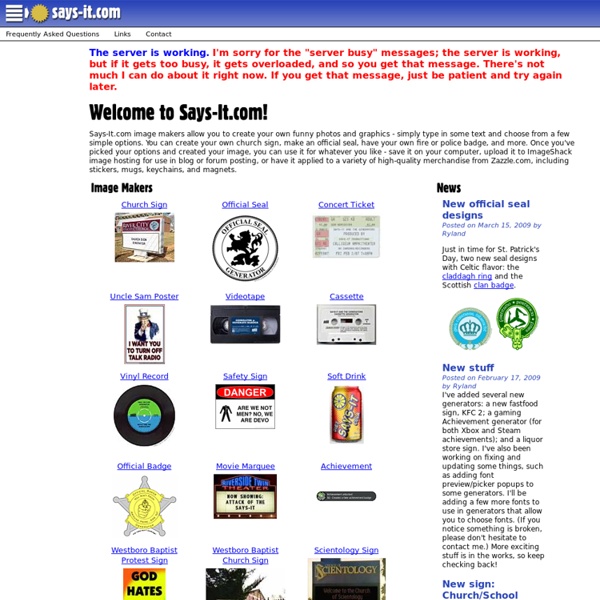



The Best 8 Tools to Create Posters for your Classroom Today, we are sharing with you some great web tools that you can use to create your own posters and customize them the way you want. Check out the list below and share with us what you think of them. Enjoy 1- Poster My Wall This is one of the most popular web tools out there. 2- Befunky This is basically a photo editor that allows users to create posters. 3- Picassa This is a powerful free image hosting and editing tool. 4- Art Skills You can use the poster making wizard of Arts Skills to create engaging posters. 5- Muzy Thoughts This is a really cool web tool to use to create posters for your classroom. 6- Posterini This is an online web tool that lets you create posters with WYSIWYC interface. 7- Smore This is an ideal web tool for those interested in creating flyers. 8- Zeen Zeen is another great tool you should consider when thinking about creating engaging posters to use with your students.
Amazing Mind / Brain Tricks Mind is the aspect of intellect and consciousness experienced as combinations of thought, perception, memory, emotion, will and imagination, including all unconscious cognitive processes. Mind manifests itself subjectively as a stream of consciousness. Neuroanatomists usually consider the brain to be the pivotal unit of what we refer to as mind. The Human Brain tricks us whenever it can. You don’t actually see what it is in real or you don’t even actually hear or smell the way it should be. Here is the time to play trick with the human brain. 10. At first this might sound like a bad practical joke. 9. In case you experience an injury, then see the injured part with an inverted binoculars, soon your pain will seem to be decreasing in its magnitude. Recently, a reasearch at Oxford University has lead to the discovery of a new pain killer – the inverted binoculars. Source: ( Link) 8. This requires two chairs and a blind fold. 7. Source: ( Link) 6. Pages: 1 2
Sign Generator Fun, Over 500 Sign Generators Good Web Tools to Create Classroom Posters Are you looking for tools to create classroom posters ? The collection below has probably what you are looking for. This is a list of some popular web tools that teachers can use with their students to create visually attractive graphics that can embed a wide range of media forms including: image, text, graphs, and drawings. I personally find myself using Google Drawing more often than anything else. There are also several good alternatives to Google Draw which you can find below.
3 Excellent Tools to Create Interactive Posters and Visuals for Your Class February 1, 2014 Interactive visuals are great learning and teaching materials to use with your students in the classroom. From explaining difficult processes to visual brainstorming, interactive graphics are a good way to consolidate students learning and promote their comprehension. Below are three of the web tools I would recommend for creating interactive visuals, I know there are several other titles to add to this list but the ones below are, in my view, more student-friendly and simpler to use. 1-Thinglink I love this web tool. 2- PiktoChart This is another wonderful web tool to create interactive visuals and posters for your Class. 3- Glogster Glogster is a social network that allows users to create free interactive posters, or Glogs.